Wine tourism in Chablis
Wine Tourism in Chablis: destination information, how to move in Chablis, Top Wine Experiences, Itineraries and tours, tips and secrets.
Famous for its crisp and mineral-rich Chardonnay wines, Chablis is a picturesque village in northern Burgundy that exudes charm beyond its vineyards. The unique terroir, with its limestone-rich soils, imparts a distinctive flinty character to its wines, making Chablis synonymous with purity and elegance in winemaking.
Beyond wine, Chablis offers a serene escape with its charming stone houses, the tranquil Serein River, and scenic hiking trails. Visitors can explore historic churches, and lively local markets, and indulge in delicious regional cuisine, making it a destination where wine, history, and nature converge harmoniously.
In this guide, we’ll delve into the heritage of Chablis, its distinctive terroir, and the exceptional wines that have made it a symbol of refinement and quality. If you're already familiar with the Chablis wine region, feel free to skip this guide and start searching for Chablis wine experiences available on winedering.com.
The Destination: Chablis
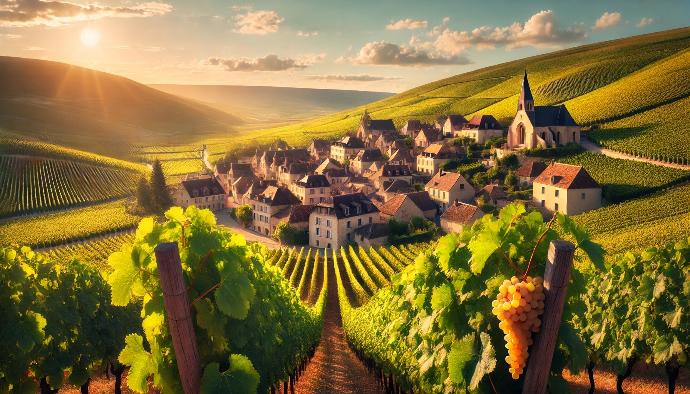
Welcome to Chablis, a village where timeless elegance, winemaking excellence, and natural beauty converge.
Situated in the northernmost part of Burgundy, Chablis is renowned worldwide for its exceptional Chardonnay wines and picturesque vineyards. The village's history dates back to Roman times, and it has been a significant winemaking hub since the Middle Ages, with the local monks playing a key role in shaping the wine culture here. Today, Chablis continues to enchant visitors with its unique terroir and vibrant community.
As you wander through the village, you’ll be captivated by its quaint streets lined with stone houses, charming wine cellars, and historical landmarks such as the Church of Saint-Martin, which dates back to the 13th century. The town's tranquil river, the Serein, flows gently through the landscape, adding to the serene ambiance and offering picturesque views.
Chablis is famed for its vineyards, which are planted on ancient limestone and clay soils, known as Kimmeridgian marl. This distinctive soil composition, coupled with a cool climate, gives Chablis wines their signature minerality, freshness, and elegance.
Beyond wine, Chablis offers a range of cultural and natural attractions. Discover the grandeur of the Abbaye de Pontigny, one of the oldest Cistercian abbeys in the world, or wander through the medieval village of Noyers-sur-Serein, known for its half-timbered houses and cobbled streets. The Musée Vinea Passion is perfect for learning more about local winemaking history, while a leisurely walk along the Serein River reveals tranquil views of the countryside.
Don’t miss the Tour Mirau d'Aval, an ancient fortified tower offering panoramic views, or explore the nearby town of Auxerre, with its stunning Gothic cathedral and vibrant atmosphere. Chablis invites you to uncover its rich heritage, savor its unparalleled wines, and embrace the serenity of this enchanting Burgundian destination.
How To Reach Chablis
When planning a trip to Chablis, consider these 3 travel routes to make the most of your journey:
Route 1: Paris and Chablis
Start in Paris, exploring its iconic landmarks and cultural treasures. Then, travel to Chablis by train or car to experience its renowned vineyards, charming village, and signature Chardonnay wines.
Route 2: Lyon, Dijon, and Chablis
Begin in Lyon, savoring its gourmet cuisine, then head to Dijon for its historic sites and wine culture. Finally, continue to Chablis to immerse yourself in the serene landscapes and discover the unique character of its wines.
Route 3:
Champagne to Chablis
Flights
The nearest international airports are Paris Charles de Gaulle (CDG) and Paris Orly (ORY). From these airports, you can either rent a car and drive to Chablis (approximately 2 hours) or take public transportation to the city center of Paris.
Alternatively, you can fly into Lyon-Saint Exupéry Airport (LYS), which is about 2.5 hours away by car. This option is ideal if you want to explore other parts of Burgundy along the way.
Trains
From Paris Gare de Lyon, take a direct train to Auxerre or Laroche-Migennes station, both of which are about 20-25 minutes away from Chablis by taxi or bus. The train journey takes around 1.5-2 hours. Another option is to travel from Paris Bercy station to Tonnerre, followed by a 15-minute drive to Chablis. If you're coming from Lyon, take a high-speed TGV train to Dijon, then transfer to a regional train to Auxerre or Laroche-Migennes.
Car / Taxis
Renting a car offers the flexibility to explore the scenic countryside of Burgundy. From Paris, take the A6 Autoroute (also known as the "Route des Vins"), heading south toward Auxerre and following signs to Chablis. The journey is about 2 hours. From Lyon, take the A6 heading north towards Dijon, then follow the A38 and local roads to Chablis.
Buses
Local buses connect Auxerre, Tonnerre, and other nearby towns to Chablis, making it an affordable option for reaching the village.
Wine & Food in Chablis
The Kingdom of Chardonnay
Chablis, located in the northernmost part of Burgundy, is one of the world’s most esteemed wine regions, renowned for its pure and expressive Chardonnay wines. The appellation spans approximately 4,700 hectares of vineyards and is characterized by its cool climate and unique soil composition, which impart distinctive qualities to the wines produced here. Chablis’ commitment to showcasing terroir results in wines that are celebrated for their elegance, minerality, and vibrant acidity.
The defining feature of Chablis is its soil, predominantly composed of Kimmeridgian limestone and clay, rich in fossilized marine shells. This geological makeup, combined with a continental climate, lends Chablis wines their signature steely minerality, subtle flintiness, and crisp structure. The region's cool temperatures contribute to the high acidity and freshness that are hallmarks of Chablis, resulting in wines that are often leaner and more focused compared to the fuller-bodied Chardonnays found in other regions.
Chablis wines are classified into four main appellations: Petit Chablis, Chablis, Chablis Premier Cru, and Chablis Grand Cru. Each classification reflects the quality, location, and specific characteristics of the vineyard sites:
- Petit Chablis: The most approachable and lightest style, typically offering crisp and refreshing wines with lively citrus and green apple notes.
- Chablis: Representing the largest production volume, Chablis wines are known for their precision, minerality, and balance, with more complexity than Petit Chablis.
- Chablis Premier Cru: These wines are produced from specific vineyard sites with superior sun exposure and soils, resulting in wines that display greater concentration, complexity, and aging potential.
- Chablis Grand Cru: Situated on the right bank of the Serein River, the Grand Cru vineyards cover just 100 hectares and consist of 7 distinct climats (vineyard plots), such as Les Clos, Vaudésir, and Valmur among others. Grand Cru Chablis wines are the pinnacle of quality, offering remarkable depth, elegance, and aging potential.
The winemaking style in Chablis varies depending on the producer and classification. While some producers prefer to ferment and age their wines in stainless steel tanks to preserve the purity and freshness of the fruit, others utilize neutral oak barrels to add complexity and subtle richness. However, Chablis wines generally avoid heavy oak influence, which allows the terroir and varietal character to shine through.
Beyond its unique terroir, Chablis is also known for its strict production regulations aimed at preserving quality and authenticity. The Chablis AOC (Appellation d’Origine Contrôlée) was established in 1938, and its standards ensure that the wines maintain their hallmark freshness, minerality, and purity. This dedication to quality has made Chablis a benchmark for Chardonnay, with its wines highly sought after by connoisseurs and wine enthusiasts worldwide.
In recent years, producers have also begun to experiment with organic and biodynamic practices, further emphasizing sustainability and respect for the land. These efforts, combined with Chablis’ unique terroir and winemaking traditions, ensure that the region continues to produce exceptional wines that reflect its timeless elegance and finesse.
💡 Did you know that each vineyard in the Chablis wine region has a unique identity, name, and character that's been recognized for centuries?
These plots, known as
Climats,
are at the heart of what makes Chablis wines so distinctive. The term
Climat
comes from the Greek word
klima
and the Latin
clima,
meaning "slope," reflecting the natural geography and microclimates that shape the wines of this renowned region. The first recorded use of the word
in Chablis dates all the way back to 1537, when it was used to describe the vineyards owned by the Abbey of Pontigny.
In 1935, the term was officially recognized as a defining characteristic of the Burgundian appellations. But it wasn't until July 4, 2015, that these unique vineyard sites received global recognition when the Climats of the Bourgogne winegrowing region, including Chablis, were inscribed on the UNESCO World Heritage List.
Traditional dishes of Chablis
The traditional cuisine of Chablis is deeply rooted in the Burgundy region’s culinary heritage and pairs exceptionally well with the region’s iconic wines. Some of the traditional dishes you can find in Chablis include:
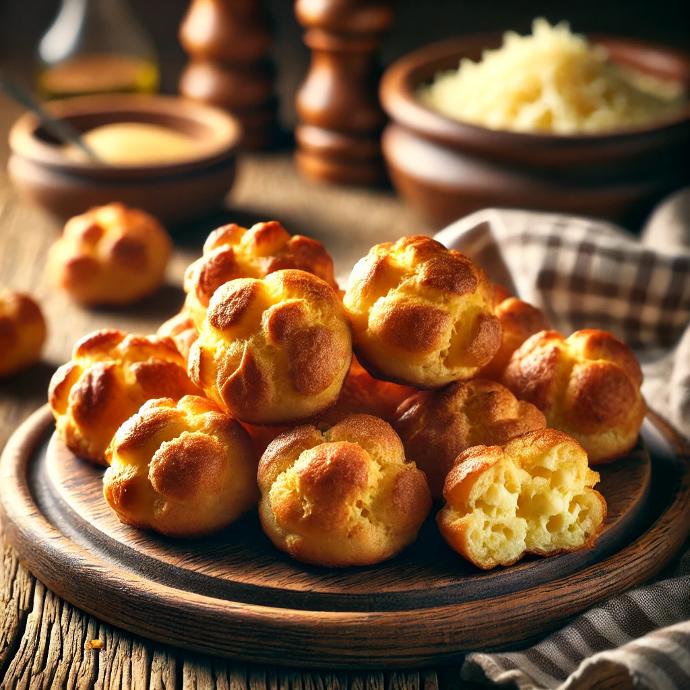
Gougères
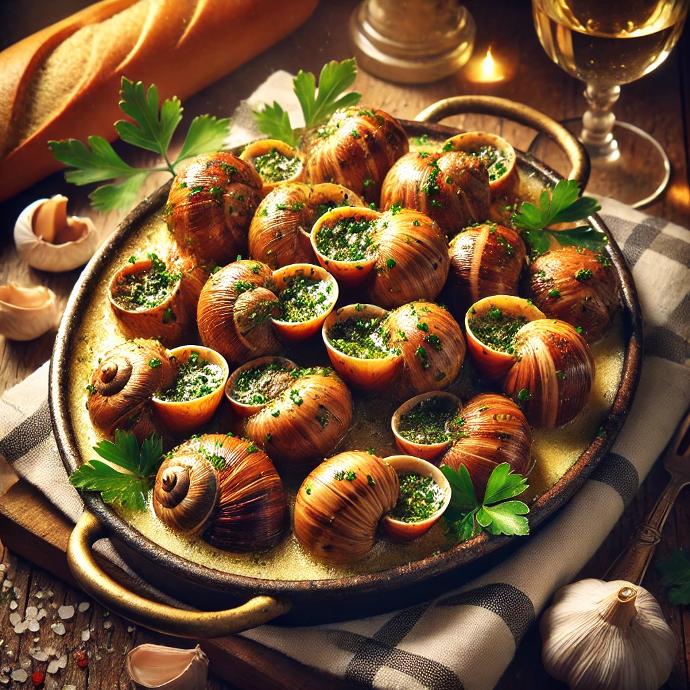
Escargots de Bourgogne
Burgundy-style snails cooked in a rich garlic, parsley, and butter sauce. The delicacy’s earthy flavors and buttery texture complement the minerality and freshness of Chablis wines.
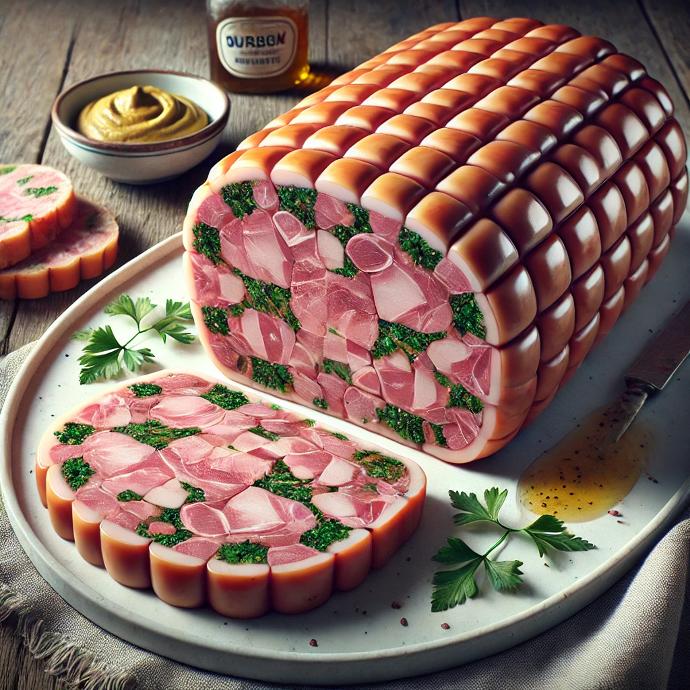
Jambon Persillé
A classic Burgundy dish made with ham hock and parsley, set in a savory aspic jelly. It is usually served as an appetizer and pairs well with the vibrant acidity of Chablis, which cuts through the dish’s richness.
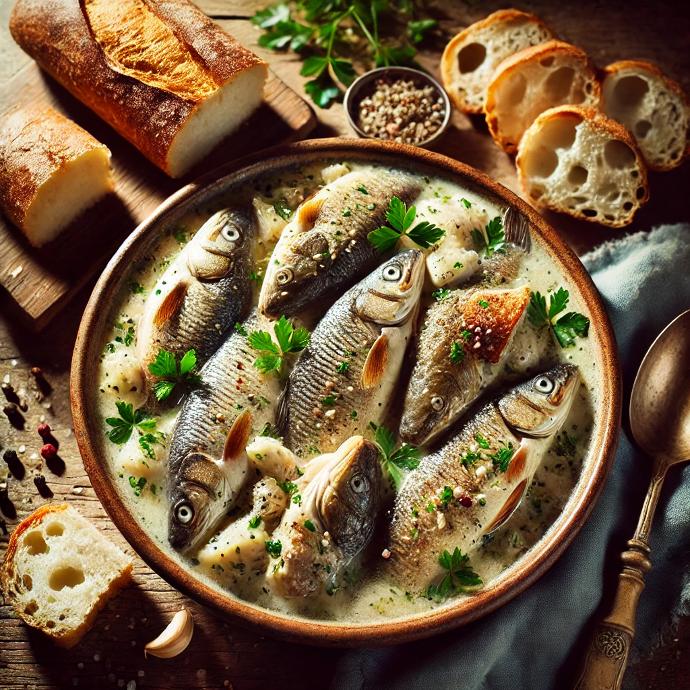
Pôchouse
A traditional fish stew made with a variety of freshwater fish such as pike, perch, and eel, simmered in a white wine sauce (often Chablis itself), onions, and herbs. This dish highlights the compatibility of Chablis with seafood.
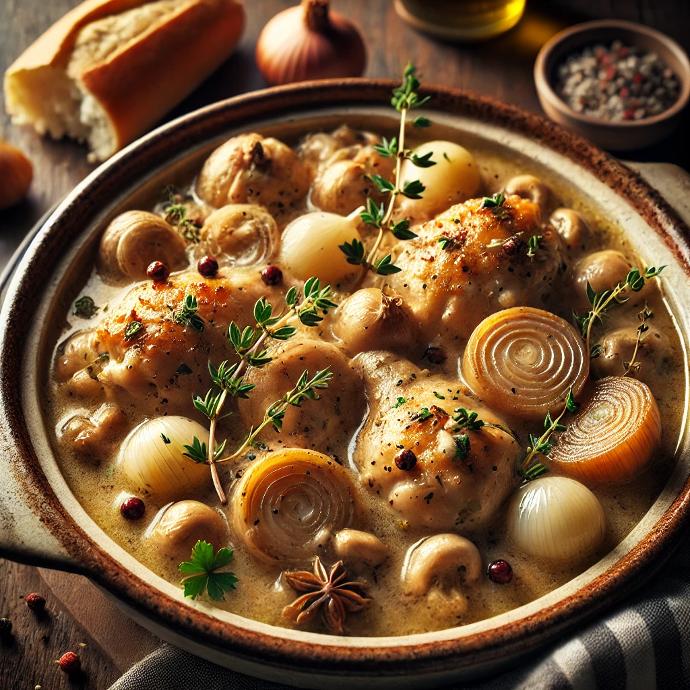
Coq au Vin Blanc
A variation of the classic coq au vin, made with white wine instead of red, often using Chablis. The dish is simmered with chicken, mushrooms, onions, and bacon, resulting in a flavorful and creamy sauce.
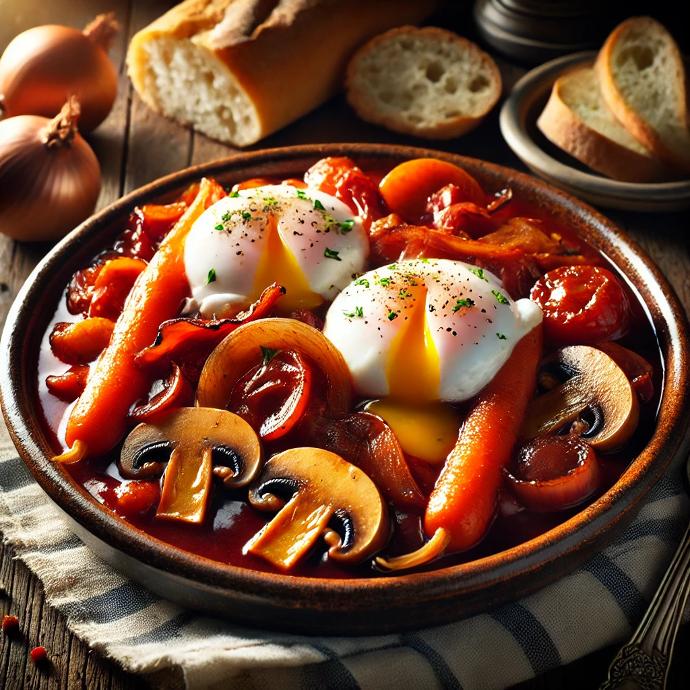
Oeufs en Meurette
A regional specialty featuring poached eggs served in a red wine sauce with onions, mushrooms, and bacon. While traditionally made with red wine, a white wine version using Chablis is also common.
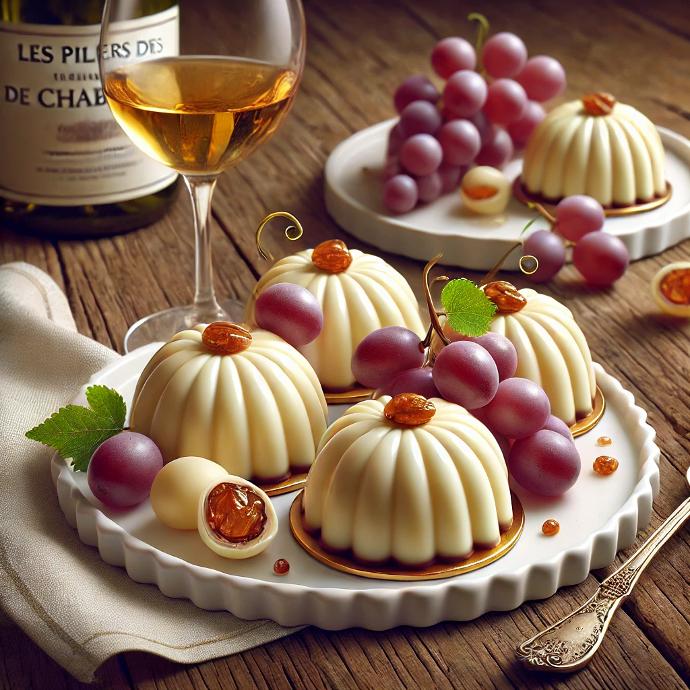
Les Piliers de Chablis
This is a refined local dessert made from white chocolate shells filled with a rich praliné ganache and grapes macerated in Marc de Bourgogne. This unique treat is known for its delicate combination of flavors, where the sweetness of white chocolate and praliné is balanced by the fruity and slightly alcoholic notes of the macerated grapes.

Le Chablisien
This exquisite cake is made up of multiple layers. It starts with a delicate sponge cake base, topped with a layer of hazelnut meringue, followed by a layer of praliné chocolate cream, sprinkled with raisins that have been macerated in ratafia – a local fortified wine. Another layer of sponge is added on top to complete the cake, creating a harmonious blend of textures and flavors.

Le Biscuit Duché
Le Biscuit Duché, crafted by the inventive Mr. Duché in the 1820s, is a traditional French delicacy that stands out for its dry, slightly firm texture and subtle sweetness. The biscuit’s delicate flavors beautifully enhance the vibrant minerality of Chablis, creating a harmonious pairing that elevates any tasting experience
Chablis & Soumaintrain: A Harmonious Pairing!
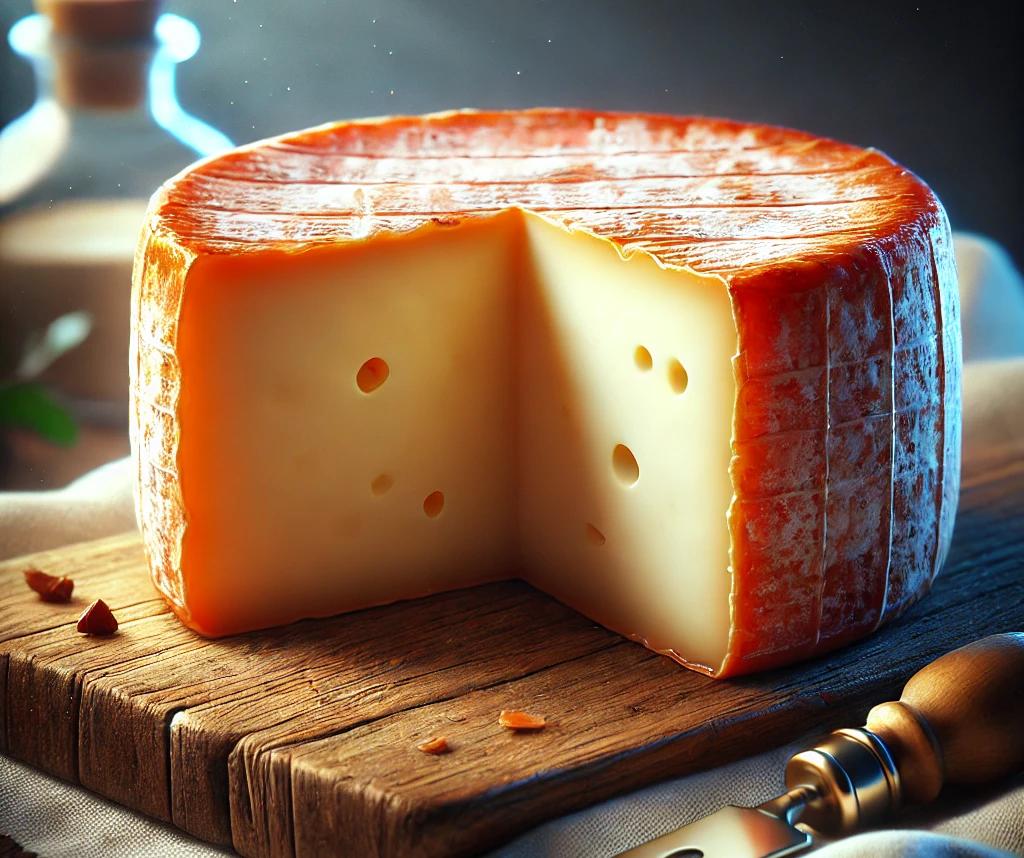
Chablis wines and Soumaintrain cheese are connected by both their proximity and shared history. The two villages are just 30 kilometers apart, and the terroir that shapes these products is intertwined with the region’s unique geological past. The Cistercian monks of the Abbey of Pontigny played a crucial role in cultivating the vines and refining cheesemaking techniques. This shared heritage contributes to the complementary nature of Chablis and Soumaintrain.
Soumaintrain, a soft cow’s milk cheese with a washed rind, has a creamy, unctuous texture and a slight acidity that develops into rich and complex flavors. Chablis, known for its minerality and fresh acidity, offers the perfect counterpoint.
Petit Chablis or Chablis is ideal for pairing with young Soumaintrain, while aged cheeses with stronger flavors are best enjoyed with Chablis Premier Cru or Chablis Grand Cru, which bring out the nuances of both wine and cheese without overpowering each other.
Top 2 Wine Experiences
Here are our 2 top recommendations for wine experiences in Chablis, carefully selected by Winedering, the world's most popular wine and food experiences marketplace. These experiences, booked by thousands of customers, are the ones we highly recommend for creating unforgettable moments.
Visit & Chablis Wine Tasting Experience at Domaine Clotilde Davenne
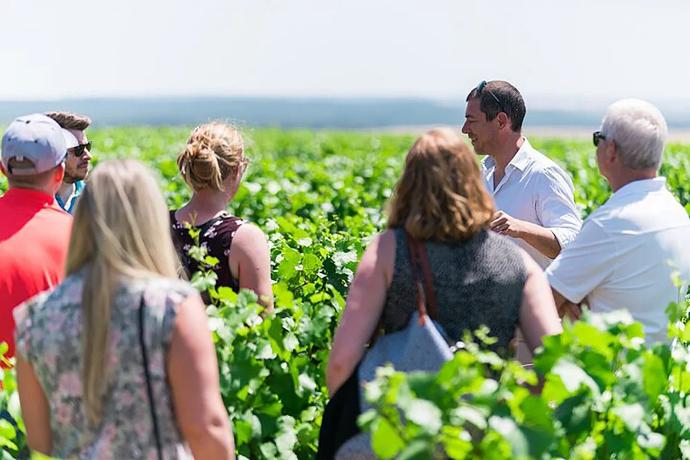
Discover the essence of Chablis at Domaine Clotilde Davenne with a guided tour of the vineyards and cellar, followed by a tasting of 6 wines from their Chablis and Auxerrois collections. The experience, lasting 1 to 1.5 hours, offers a memorable journey into winemaking set against the beautiful Chablis landscape. Ideal for wine enthusiasts looking to explore the region’s terroir and history.
Experience type: Winery visit & tasting
Ideal for: friends, solo travelers, groups (max 12 people)
Grands Crus Vineyard Ride and Chablis Wine Tasting at Domaine Clotilde Davenne
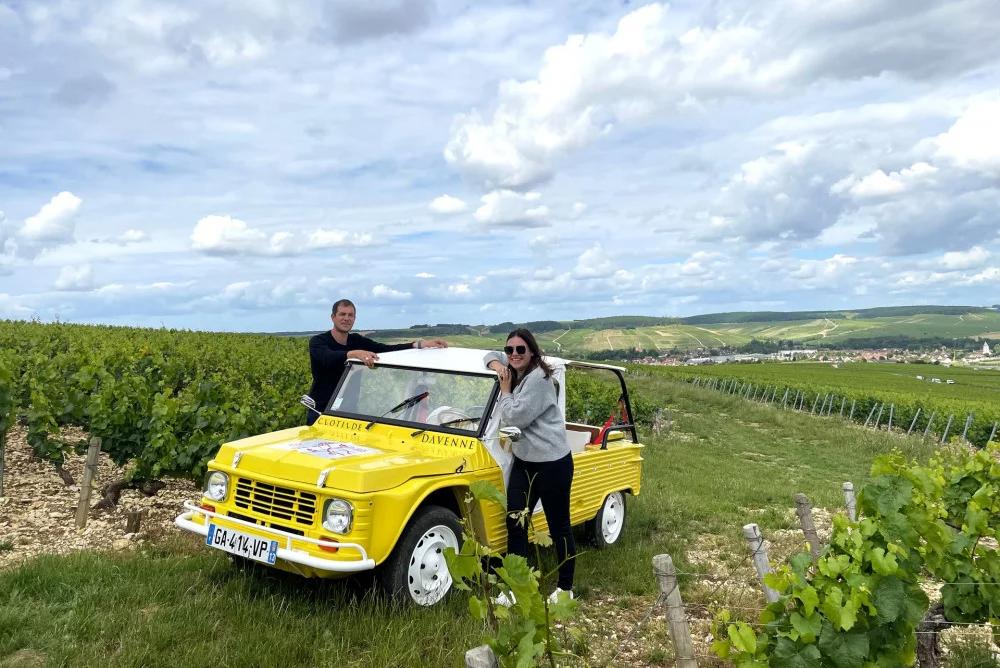
Explore Chablis like never before at Domaine Clotilde Davenne! Hop on an electric Mehari for an eco-friendly ride through the famed Grands Crus vineyards, enjoying panoramic views of the lush landscape. This unique 2-hour experience departs from the heart of Chablis and is followed by a guided tasting of 6 exquisite wines at the winery's shop. Immerse yourself in the terroir and tradition of Chablis while learning about the estate’s winemaking techniques and history.
Experience type: Vineyard visit and tasting
Ideal for: couples, friends (max 3 people)
Enjoy Wine Experiences in Chablis
With detailed itineraries and insider tips, your adventure through the Chablis wine region will be both seamless and enriching.
Remember to take your time, enjoy the stunning views, and soak in the warm hospitality of the local winemakers and residents. Here's to many memorable wine experiences in Chablis, that you can easily book online on Winedering.com, the best online wine tourism marketplace worldwide.
Bon voyage and cheers to an unforgettable Chablis adventure!